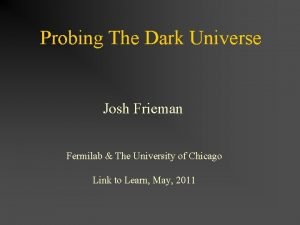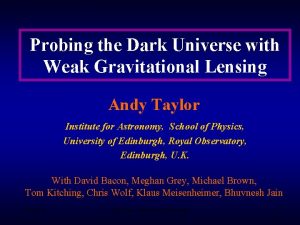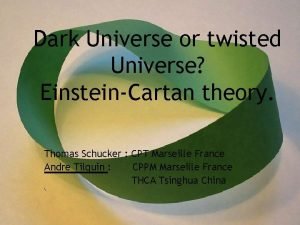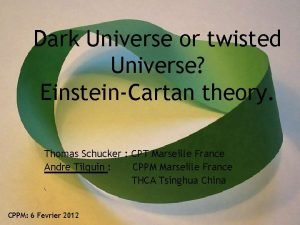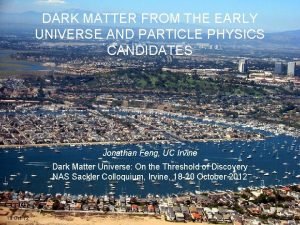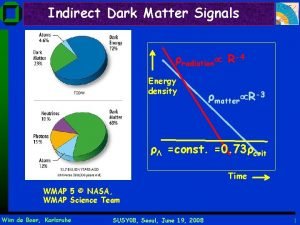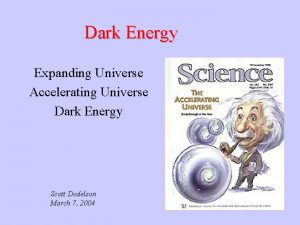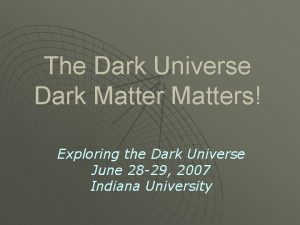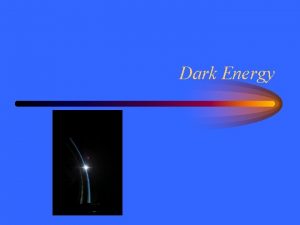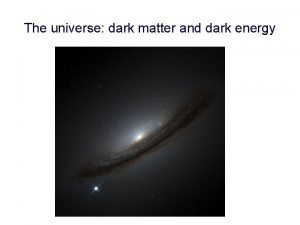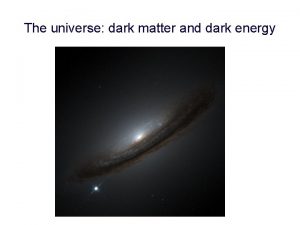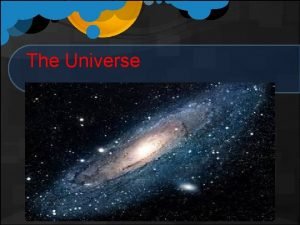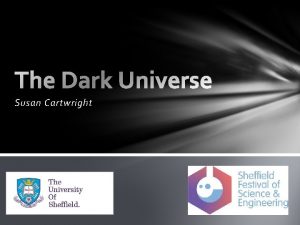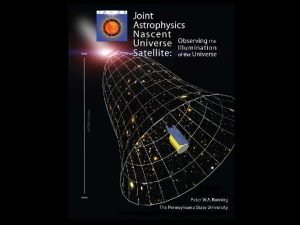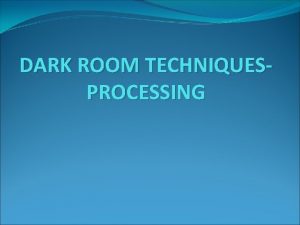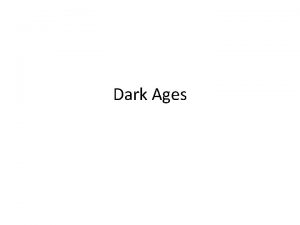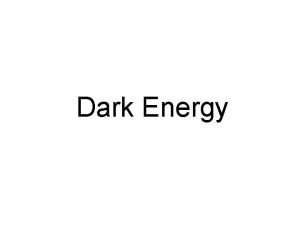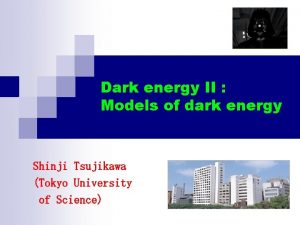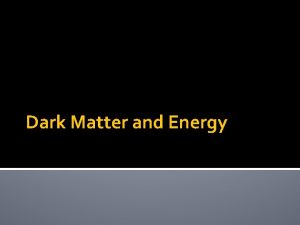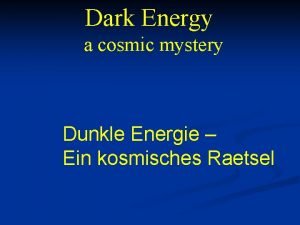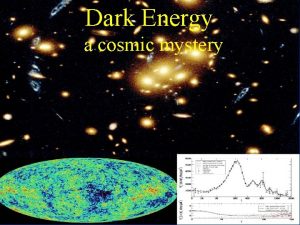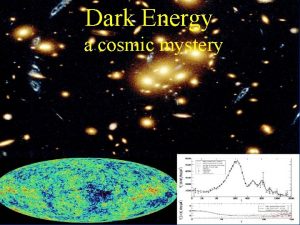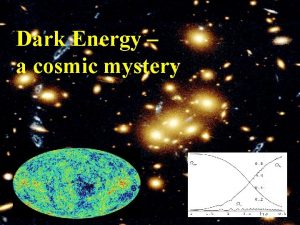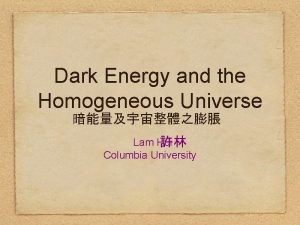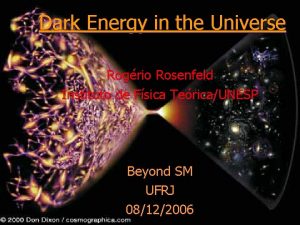Dark energy the greatest mystery of the universe























- Slides: 23

Dark energy: the greatest mystery of the universe Syksy Räsänen Department of Physics and Helsinki Institute of Physics Arkadia bookshop, 31. 10. 2011 www. helsinki. fi/yliopisto 1

Physics Nobel prize 2011 • “for the discovery of the accelerating expansion of the Universe through observations of distant supernovae” Saul Perlmutter Arkadia bookshop, 31. 10. 2011 Brian P. Schmidt Adam G. Riess 2

From brightness to darkness • Observation: Distances are longer than expected. • Interpretation: Expansion of the universe has accelerated. • Cause: Dark energy. Arkadia bookshop, 31. 10. 2011 3

Type Ia supernova Arkadia bookshop, 31. 10. 2011 4

Type Ia supernova 5 Arkadia bookshop, 31. 10. 2011

From astrophysics to cosmology • Supernovae are dimmer. • Exclude scattering from dust, evolution, and so on ⇒ supernovae are further away • How to relate distance to expansion rate? • The result is unexpected, so should be careful with assumptions. Arkadia bookshop, 31. 10. 2011 6

Arkadia bookshop, 31. 10. 2011 www. helsinki. fi/yliopisto 7

WMAP 2003 http: //map. gsfc. nasa. gov/ Arkadia bookshop, 31. 10. 2011 www. helsinki. fi/yliopisto 8

Planck 2010 http: //sci. esa. int/science-e/www/object/index. cfm? fobjectid=47333 Arkadia bookshop, 31. 10. 2011 www. helsinki. fi/yliopisto 9

Arkadia bookshop, 31. 10. 2011 www. helsinki. fi/yliopisto 10

Assumptions 1. General relativity is valid. 1. The universe is a four-dimensional curved spacetime. 2. The relation between curvature and matter is determined by the Einstein equation. 2. Space is exactly homogeneous and isotropic. Arkadia bookshop, 31. 10. 2011 11

The Friedmann-Lemaître. Robertson-Walker model • Assumptions 1. 1 (spacetime) and 2 (symmetry) lead to a relation between distance and expansion rate. • It follows that the longer distances imply faster (in fact accelerated) expansion. • Adding assumption 1. 2 (dynamics) leads to the conclusion that there is matter with negative pressure. Arkadia bookshop, 31. 10. 2011 12

Dark energy • Dark energy is a form of matter which has negative pressure, does not absorb or emit light and which is evenly spread in the universe. • Not to be confused with dark matter, which has positive pressure and is clumped. Arkadia bookshop, 31. 10. 2011 13

Vacuum energy • Best candidate for dark energy: vacuum energy/cosmological constant. • In quantum field theory, there is energy associated with empty space. This fits the observations well. (Some issues with galaxy distribution remain. ) • Main problems with vacuum energy are theoretical. Arkadia bookshop, 31. 10. 2011 14

Problems with vacuum energy 1. Why is the vacuum energy density so small? 2. Why is the vacuum energy density so close to the matter energy density today? (“the coincidence problem”) Arkadia bookshop, 31. 10. 2011 15

The smallness problem • Naive theoretical estimate of vacuum energy density: • Value which fits the observations: • A mismatch of 10 -120. • “The worst prediction in all of theoretical physics. ” Arkadia bookshop, 31. 10. 2011 16

The coincidence problem • Vacuum energy density stays constant. • In contrast, as the universe expands, the energy density of matter drops inversely to the volume. • Today, . • Why are we living in a special era? Why 10 billion years? Arkadia bookshop, 31. 10. 2011 17

Models of dark energy • Vacuum energy is the simplest model of dark energy. • Dozens of different alternatives have been studied. • Could be a field permeating all of space, quintessence. • A common problem: why 10 billion years? Arkadia bookshop, 31. 10. 2011 18

Three alternatives • Recall: if we assume general relativity + homogeneity & isotropy, dark energy is needed. • What if general relativity needs to be modified? • What if the approximation of neglecting structures is not valid? Arkadia bookshop, 31. 10. 2011 19

Modified gravity • We can either drop the Einstein equation or the four-dimensional spacetime, or both. • However, general relativity has been well tested. • The simplest modification, the cosmological constant, is equivalent to vacuum energy. • Also: why 10 billion years? Arkadia bookshop, 31. 10. 2011 20

Effect of structures • We can drop the approximation of perfect homogeneity and isotropy. • This changes both the relationship between distance and expansion rate, as well as the expansion rate. • Expansion can accelerate without negative pressure. • Distances can be longer without acceleration. • Structure formation has a time scale of 10 billion years. • No realistic models yet. Arkadia bookshop, 31. 10. 2011 21

Questions remain • Distance observations show that something strange is going on. • Vacuum energy fits the observations, but makes people uneasy. • Dark energy, modified gravity, the effect of structures? • Nobel committee: “dark energy [. . . ] is an enigma, perhaps the greatest in physics today” Arkadia bookshop, 31. 10. 2011 22

On the history and future of gravity Tieteiden talo ti 8. 11. kello 18: ”Kuun alta kaarevaan avaruuteen” Arkadia bookshop, 31. 10. 2011 23
 Dark matter and dark energy ppt
Dark matter and dark energy ppt Probing the dark universe
Probing the dark universe Probing the dark universe
Probing the dark universe Thomas dark universe
Thomas dark universe Twisted universe
Twisted universe In the dark dark town
In the dark dark town Energy energy transfer and general energy analysis
Energy energy transfer and general energy analysis Energy energy transfer and general energy analysis
Energy energy transfer and general energy analysis Cube of stabilized dark energy
Cube of stabilized dark energy Dma dark energy
Dma dark energy Hình ảnh bộ gõ cơ thể búng tay
Hình ảnh bộ gõ cơ thể búng tay Slidetodoc
Slidetodoc Bổ thể
Bổ thể Tỉ lệ cơ thể trẻ em
Tỉ lệ cơ thể trẻ em Chó sói
Chó sói Chụp phim tư thế worms-breton
Chụp phim tư thế worms-breton Chúa yêu trần thế alleluia
Chúa yêu trần thế alleluia Các môn thể thao bắt đầu bằng tiếng bóng
Các môn thể thao bắt đầu bằng tiếng bóng Thế nào là hệ số cao nhất
Thế nào là hệ số cao nhất Các châu lục và đại dương trên thế giới
Các châu lục và đại dương trên thế giới Cong thức tính động năng
Cong thức tính động năng Trời xanh đây là của chúng ta thể thơ
Trời xanh đây là của chúng ta thể thơ Mật thư anh em như thể tay chân
Mật thư anh em như thể tay chân 101012 bằng
101012 bằng

